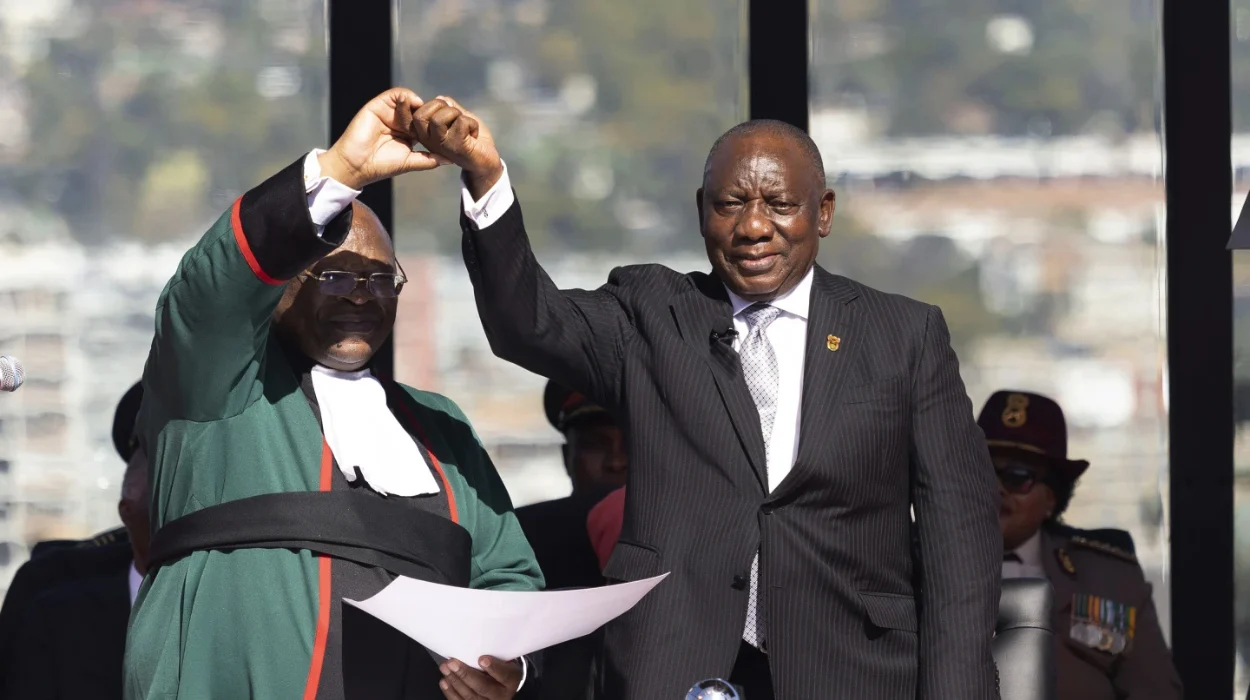US (Transatlantic Today) – In a groundbreaking political development, South African President Cyril Ramaphosa has appointed a coalition cabinet comprising seven different parties. This unprecedented power-sharing arrangement comes in the wake of the African National Congress (ANC) losing its parliamentary majority in a historic election held in late May.
A New Political Landscape
Ramaphosa’s announcement on Sunday night marks a significant departure from the ANC’s 30-year dominance in South African politics, a tenure that began after the end of apartheid in 1994. The new multiparty Cabinet is the result of a month of intense negotiations, primarily between the ANC and the Democratic Alliance (DA), the former leading opposition party now willing to share power.
The coalition consists of 11 parties, with seven securing Cabinet positions, but the primary alliance remains between the ANC and the DA. This collaboration is notable, given their longstanding ideological differences and decades of rivalry.
Key Cabinet Positions Retained by the ANC
Despite the new multiparty Cabinet, the ANC retains control over vital ministries. Ramaphosa reappointed Paul Mashatile as Deputy President and kept ANC members in charge of critical portfolios, including finance, trade and industry, foreign affairs, defense, and justice. The ANC, which garnered 40% of the votes in the recent election, holds 20 of the 32 Cabinet minister positions.
The ANC’s continued leadership in the foreign ministry suggests a persistent pro-Palestinian stance, especially as South Africa pursues a sensitive case against Israel at the United Nations. The nation is also set to assume the presidency of the Group of 20 (G20) in the coming year, amplifying its influence in international affairs.
Concessions Made to the DA
In a significant move, Ramaphosa allocated six ministerial positions to the DA, appointing its leader, John Steenhuisen, as Minister of Agriculture. Although the DA sought the trade and industry portfolio, it received deputy minister roles instead, which will serve as critical tests for their collaboration with the ANC.
The ANC and DA’s ideological divides are evident, particularly regarding economic policies. The ANC defends its Black Economic Empowerment initiative aimed at correcting historical injustices, while the DA advocates for a race-neutral policy framework.
Navigating Racial Dynamics
The coalition faces broader challenges linked to South Africa’s complex racial dynamics. The ANC, a symbol of liberation from white minority rule, now partners with the DA, which is often perceived as representing the interests of the country’s small white minority, comprising just 7% of the 62 million population. While the DA maintains support among many Black South Africans, the historical context of apartheid complicates perceptions.
Ramaphosa’s Cabinet also includes the leader of the Freedom Front Plus party, which has roots in right-wing politics. Their inclusion raises further questions about whether South Africa can overcome its racial divides within this unprecedented coalition.
Steep Challenges Ahead
Despite pledging to collaborate, both Ramaphosa and Steenhuisen face significant obstacles. While the DA supported Ramaphosa’s bid for a second term in Parliament, the coalition must navigate South Africa’s pressing socio-economic issues. With soaring inequality and an official unemployment rate of 32%, reaching 45% among youth, the coalition’s effectiveness will be tested.
Additionally, South Africa grapples with high violent crime rates and deteriorating public services, exemplified by a series of severe electricity blackouts throughout 2023. These systemic challenges contributed to the ANC’s decline in the recent election, compelling a reevaluation of governance in the country.
Conclusion
As South Africa embarks on this new political journey, the success of the coalition government will hinge on its ability to address the pressing issues facing the nation while managing the complex interplay of its diverse political landscape. The coming months will be pivotal in determining whether this historic arrangement can foster stability and progress in South Africa.


























